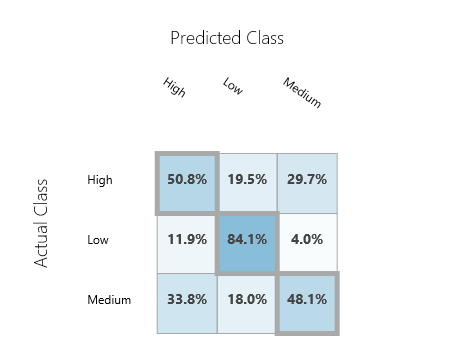
Key Challenges
• Analyze past purchase behavior and collect customer data from relevant data sources.
• Identify which customer actions are most likely to lead to future purchases.
• Use AI to parse customer data to identify which customers are most likely to purchase products.
Business Case
Traditional approaches to generating sales leads are very expensive and time-consuming. Internet retailers invest in tracking web click-throughs and using company IP addresses to generate sales leads. Once potential customers are identified, sales executives offer them compelling promotions.
Due to a large customer base, our client has multiple databases that contain information relating to purchase history, visits to online portals, and social profiles. Using our client’s databases, we developed machine learning (ML) models to evaluate small business’ intent to purchase. As an intermediate step, we evaluated results from our ML models against traditional approaches to generating sales leads. If the ML models could generate sales leads accurately, the client could experience significant savings over the traditional approach.
Solution
MAQ Software used multiclass classification algorithms to predict customer purchase intent as “high,” “medium,” or “low.”Key Highlights
• Applied SQL transformation to cleanse and preprocess data.
• Identified relevant customer actions through feature selection methods.
• Trained data with multiclass classification algorithms.
We started by collecting data from traditional and digital marketing channels. These channels included seminar and webinar participation, email engagement, and product website engagement. We performed data cleansing and preprocessing and then identified which activities customers performed before purchasing products.
Next, we split the data into training and testing sets. We trained the data using multiclass classification algorithms. Finally, we evaluated the algorithms and selected the algorithm with the best output.
To respect privacy, we only used data from customers that opted to share their information.
 |
| Figure 1: Correlation of results from ML models to the traditional approach |
As shown in Figure 1, we compared the results from the ML model to the results from the traditional method.
• The ML model identified customers that the traditional model labeled as high purchase intent correctly as high 50.8% and as medium 29.7% of the time.
• The ML model identified customers that the traditional model labeled as low purchase intent correctly as low 84.1 % of the time.
• The ML model identified customers that the traditional model labeled as medium purchase intent correctly as medium 48.1% and as high 33.8% of the time.
Business Outcome
The ML model is a quick and low-cost method to narrow the focus of sales leads. The model determined with high accuracy (84.1%) which customers have a low purchase intent. By correctly identifying the low purchase intent customers with the ML model, the client can focus sales efforts on high and medium purchase intent customers.Outcome Highlights
• Focused marketing efforts by determining which customer actions most likely lead to purchases.
• Saved time by cleansing data for more accurate processing.
• Reduced sales expenses by using AI to sort customers into high, medium, and low purchase intent.
Click here to learn more about our AI expertise.
